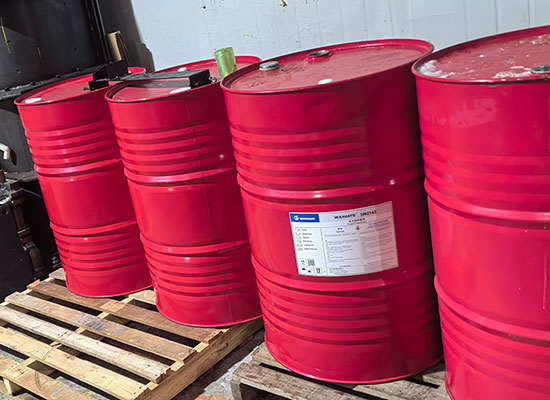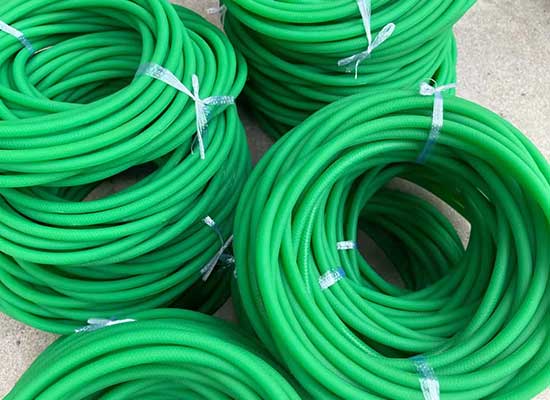Polyurethane elastomer is a kind of polymer synthetic material between rubber and plastic, known as the “fifth plastic”. Because of its high strength, high elasticity, good wear resistance and shock absorption properties, as well as oil resistance, solvent resistance and stable chemical properties, it is widely used in various industries.
The raw materials of polyurethane elastomer that we often use have the following types;
1. Based on the form of the raw materials, polyurethane material can be split into Thermoplastic elastomers (TPU) and thermosetting polyurethane elastomers (CPU).

Characteristics of Thermoplastic Polyurethane Elastomer (TPU):
Good wear resistance and tear resistance.
.High elasticity and resilience.
Excellent mechanical strength.
Good oil resistance and solvent resistance.
Can be formed by various processing methods such as injection molding, extrusion, and blow molding.
Properties of Thermoplastic Polyurethane Elastomer (TPU):
The hardness range is wide, ranging from Shore hardness 60A to 80D.
The tensile strength is high, which can reach more than 50MPa.
The elongation at break is large, usually between 300% – 700%.
The low-temperature flexibility is good, and it can still maintain good elasticity at low temperatures.
Has good weather resistance and anti-aging performance

Characteristics of Thermosetting Polyurethane Elastomer (CPU):
Excellent wear resistance: It can maintain good surface quality under long-term use and friction conditions.
High mechanical strength: It has high tensile strength, tear strength and compressive strength.
Good oil resistance and solvent resistance: It can maintain stable performance in oil and solvent environments.
Good shock absorption and buffering performance: It can effectively absorb impact and vibration energy.
Good dimensional stability: The size changes little after molding and the precision is relatively high.
Good bonding performance: It can form a firm bond with a variety of materials.
Properties of Thermosetting Polyurethane Elastomer (CPU):
Mechanical properties: The tensile strength can reach 20 – 50 MPa, the elongation at break is usually between 300% – 800%, and the hardness range is wide (Shore A 10 – Shore D 80).
Temperature resistance performance: Generally, it can work normally in the temperature range of -40°C to 120°C.
Resilience performance: It has good resilience ability and can effectively absorb and release energy.
Aging resistance performance: The physical properties decline slowly after long-term use and the service life is long.
Dynamic performance: It shows good damping characteristics under dynamic loads and can effectively reduce vibration and noise.
2.Based on the type of polyol, polyurethane elastomer can be classified into Polyester and Polyether.
Characteristics of Polyester Polyols:
High strength and hardness.
Good oil resistance and solvent resistance.
Properties of Polyester Polyols:
Higher cohesion and adhesion.
Due to the presence of ester bonds, its hydrolysis stability is relatively poor.
Characteristics of Polyether Polyols:
Good low-temperature flexibility.
Excellent hydrolysis resistance and mold resistance.
Properties of Polyether Polyols:
Relatively low viscosity, easy for processing and operation.
Has good air permeability and hygroscopicity.
3.Based on the type of isocyanate raw materials used, polyurethane elastomers are divided into, methylene diphenyl diisocyanate (MDI), toluene diisocyanate (TDI), IPDI, PPDI, NDI and so on.
Characteristics and Properties of MDI:
• Has relatively high hardness and strength.
• Good wear resistance and tear resistance.
•The price of MDI is slightly more expensive, the toxicity is lower than that of TDI, and the molding property of polyurethane products formed by MDI is relatively good.
Characteristics and Properties of TDI:
• The price is relatively low, and the cost advantage is obvious.
• Easy to process and has good elasticity and softness.
• But there may be certain volatility and toxicity.
Characteristics and Properties of IPDI:
• Good weather resistance, hydrolysis resistance and yellowing resistance.
• Low viscosity for easy operation
Characteristics and Properties of PPDI:
• Outstanding heat resistance.
• High hardness and strength.
• The price is on the high side
Characteristics and Properties of NDI:
• Has extremely high strength and excellent dynamic performance.
• Extremely high strength and wear resistance. Good heat resistance and oil resistance.
• The price is usually high
1. Polyurethane Elastomer AB compound;
Material A is generally the polyol component, which may include polyether polyols, polyester polyols, etc., and may also contain additives such as chain extenders, catalysts, foam stabilizers, and silicone oil.
Material B is usually the isocyanate component, common ones such as MDI (diphenylmethane diisocyanate), TDI (toluene diisocyanate), etc.
When in use, materials A and B are mixed in a certain proportion and cured through a chemical reaction to form a polyurethane elastomer.
It should be noted that the final performance of polyurethane products is also comprehensively affected by various factors such as the type and molecular weight of polyols, chain extenders, formulation ratios, and processing techniques.
How to choose the appropriate polyurethane elastomer materials based on different applications and requirements? You can consider the following aspects:
1. Mechanical performance requirements
• If high strength and high wear resistance are required, polyurethane elastomers based on NDI or PPDI may be a better choice.
• For general strength and wear resistance requirements, those based on MDI or TDI usually can meet the needs.
• For applications that require good low-temperature performance and elasticity, IPDI may be a better choice.
2. Temperature resistance performance
• When the working environment temperature is high, polyurethane elastomers based on PPDI or NDI should be given priority as they have better heat resistance performance.
• For normal temperature applications, those based on MDI, TDI or IPDI may be sufficient.
3. Chemical corrosion resistance
• If in contact with strongly corrosive chemicals, it is necessary to choose materials with good chemical corrosion resistance, such as polyurethane elastomers based on specific formulations of MDI or PPDI.
4. Weather resistance
• In cases of long-term outdoor use and high requirements for color stability, polyurethane elastomers based on IPDI are more suitable due to their good weather resistance and anti-yellowing performance.
5. Cost limitations
• When the budget is limited, polyurethane elastomers based on MDI and TDI are usually more cost-effective.
6. Dynamic performance
• For applications that frequently bear dynamic loads, such as shock-absorbing components, polyurethane elastomers based on NDI are more ideal due to their excellent dynamic performance.
7. Processing technology and production efficiency
• The reaction activity and process conditions of different raw materials during the processing process are different. Some materials have high reaction activity and fast processing speed, which are suitable for large-scale production; while some materials have low reaction activity and a more complex processing process, but may meet special performance requirements.
8. Environmental protection requirements
• Some raw materials may have certain limitations in terms of environmental protection. Pay attention to environmental protection indicators such as volatile organic compound (VOC) emissions and toxicity of the materials, and choose materials that meet environmental protection standards.
Comprehensively consider the above factors, and in combination with specific application scenarios and performance requirements, communicate fully with us, and we can help you choose the polyurethane elastomer materials that are more suitable for your applications and requirements, and conduct small sample tests to determine their suitability.



